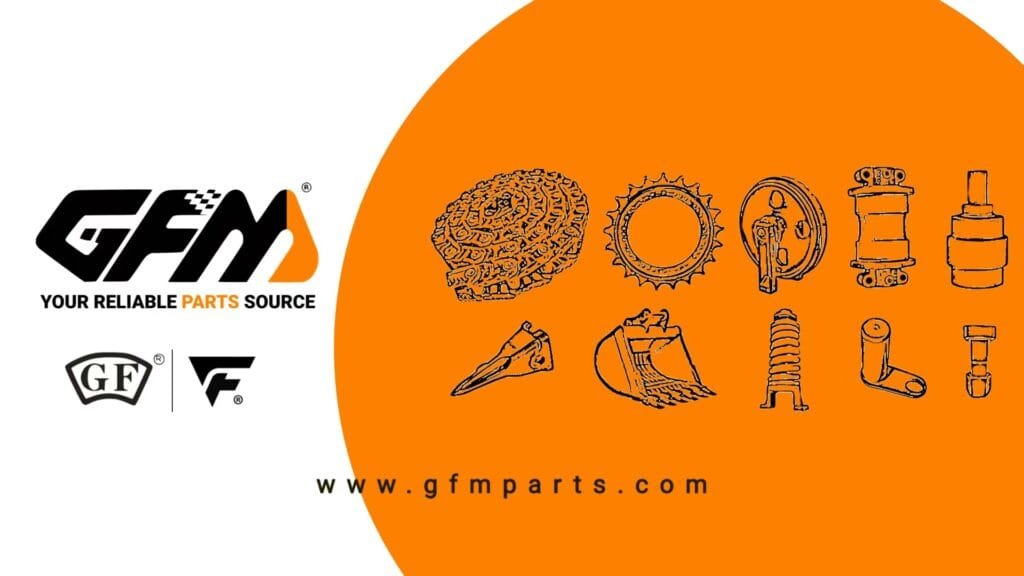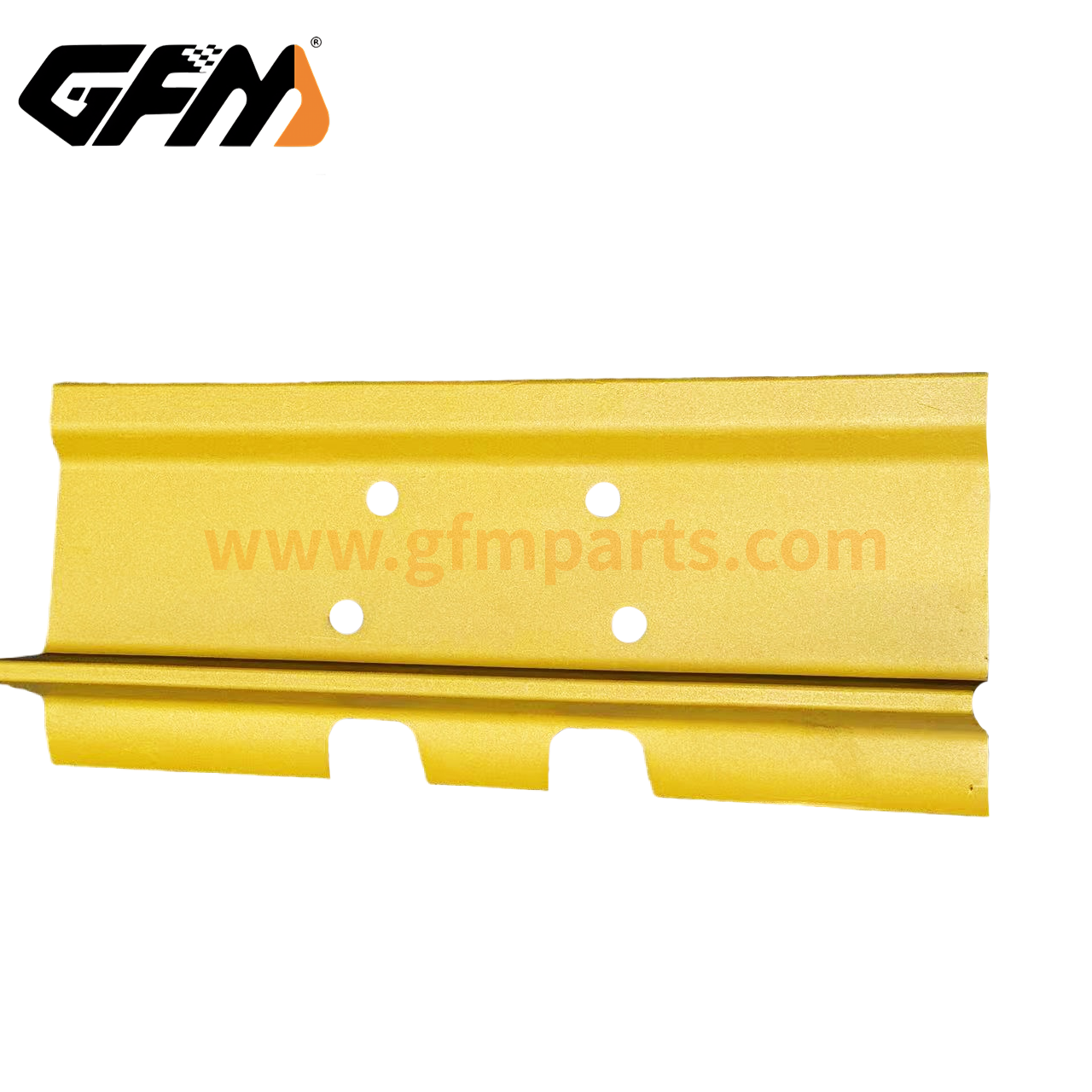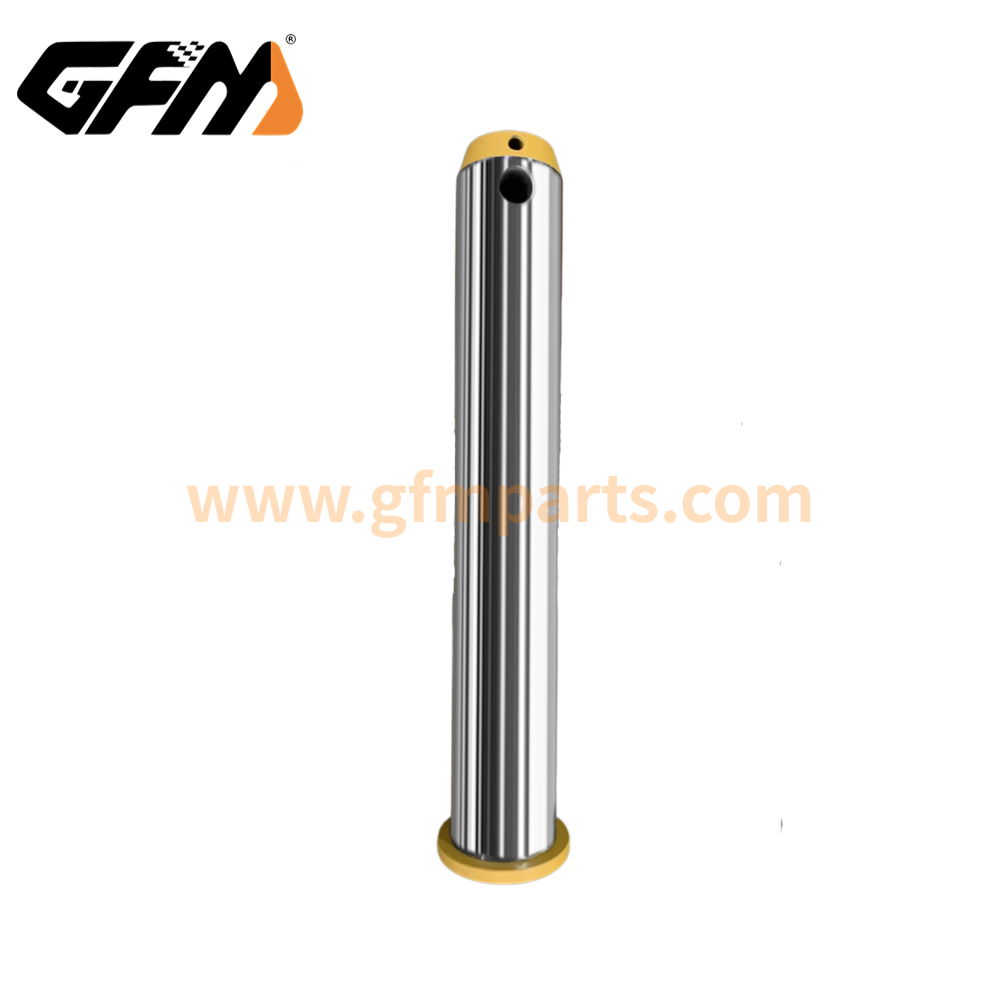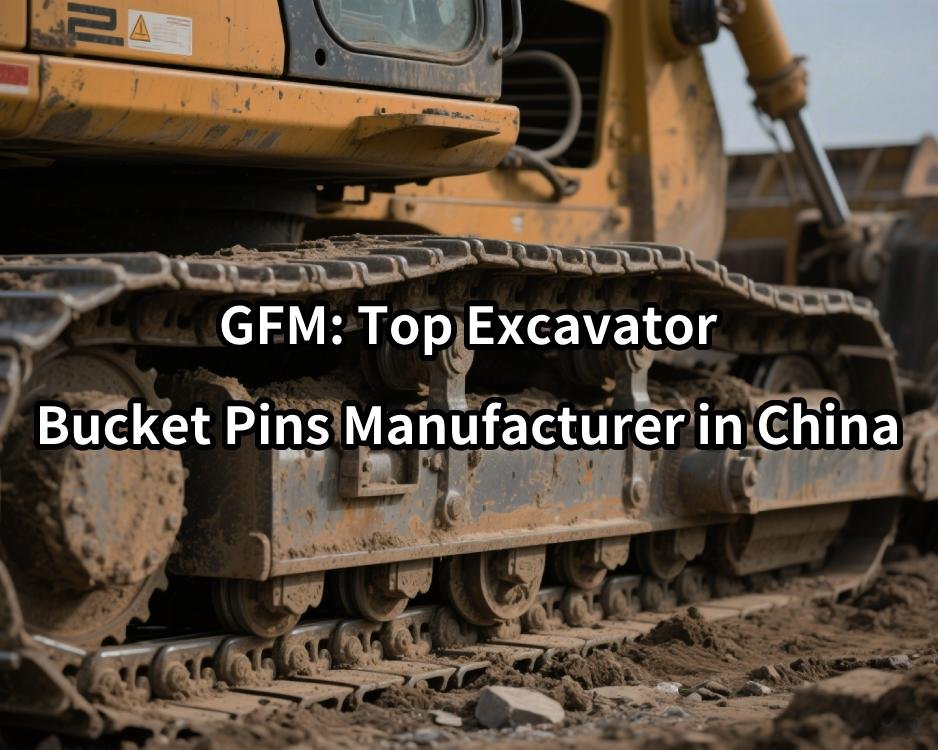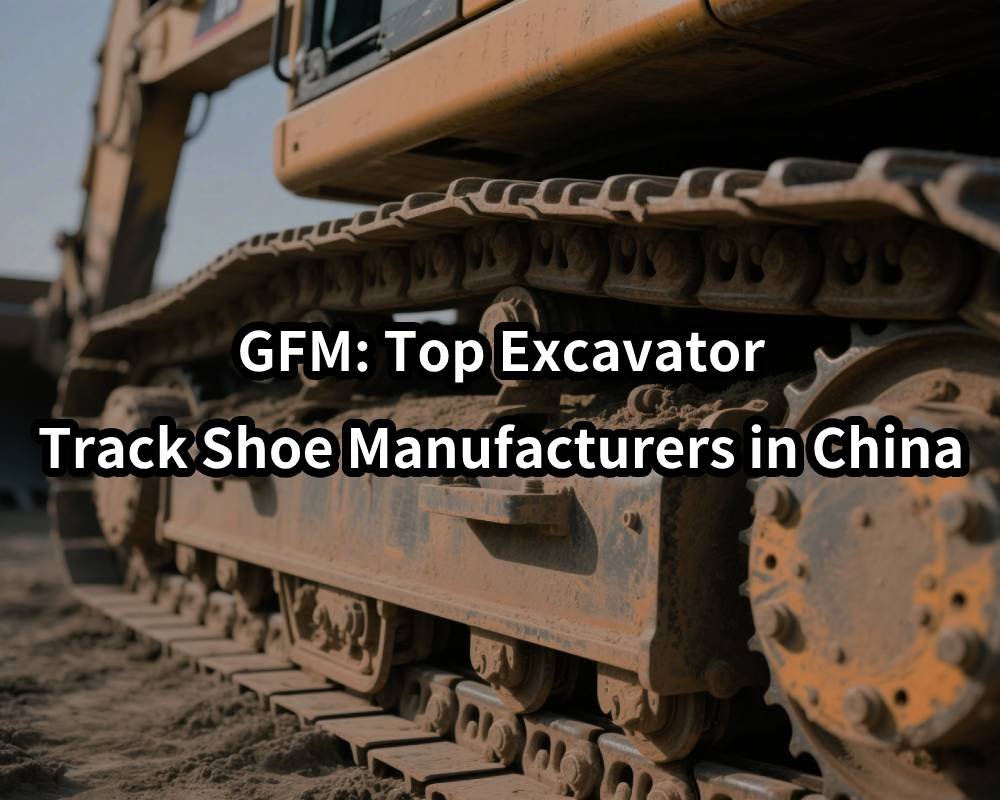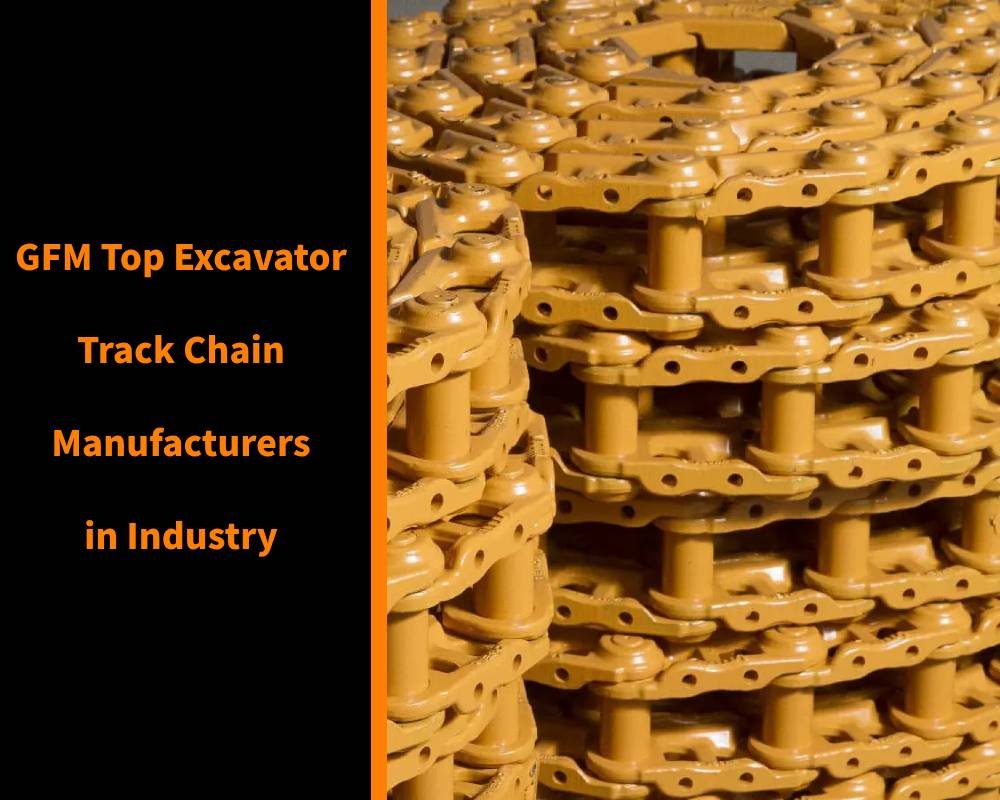Table of contents
On the stage of engineering construction and infrastructure development, bulldozers are like diligent dancers, shaping the messy terrain into a smooth canvas with strong power and precise movements. Whether it is leveling the foundation pit of urban high-rise buildings or opening new roads in the countryside, bulldozers play an irreplaceable and important role. For GFM excavator parts manufacturer, the chassis of each bulldozer not only determines the stability and durability of the machine, but also affects the efficiency and safety of each operation.
This guide will take you to an in-depth understanding of the various types of bulldozers and their application scenarios, analyze the key points of selecting blades and power systems, and provide comprehensive support for your project selection with vivid cases and practical suggestions. You no longer need to lose your sight in the cumbersome technical parameters, just focus on the actual needs, let us unveil the world of bulldozers together.
What are the different types of bulldozers?
Although bulldozers look similar, they have evolved into several major “family members” according to the differences in environment and tasks. They each perform their duties to meet various landforms and operation needs.
Crawler bulldozer
Features and advantages: Crawler bulldozers are equipped with wide steel tracks that can maintain reliable grip on slippery and soft soils, and can pass smoothly from muddy construction sites to rugged mine steps. The tracks disperse the weight of the machine, reduce ground pressure, and reduce the risk of getting stuck. The body structure is sturdy and suitable for long-term heavy-load operations.
Typical application scenarios: After the excavation of the foundation of a large building, the site needs to be quickly cleaned and initially compacted; in the mine material pile area, the slag needs to be pushed to the designated location; in mountain road construction, the slope needs to be cut and leveled.
Wheel bulldozer
Features and advantages: Wheel bulldozers use rubber tires, and their maneuverability and turning flexibility far exceed those of crawlers. They are suitable for hardened roads and processes that require frequent movement. The tires are comfortable, have less vibration, and reduce operator fatigue.
Typical application scenarios: Urban road maintenance, airport runway maintenance, municipal landscaping construction, and other sites that require high speed and maneuverability.
Small/compact bulldozers
Features and advantages: Flexible in size, it can enter and exit narrow work areas, such as residential courtyards, underground garage entrances, factory walls and other places with limited space. Although the power is relatively small, it can also be used for loosening soil, clearing gravel and light leveling tasks when equipped with multi-functional shovels and accessories.
Typical application scenarios: Site finishing after house foundation excavation, trench backfilling in pipeline construction, farmland transformation and removal of broken wood and branches in garden construction.
Hybrid bulldozers
Features and advantages: Energy conservation and emission reduction have become a new trend in the messy construction site environment. Hybrid bulldozers combine diesel engines and electric motors to intelligently switch power sources according to work needs, provide sufficient torque at high loads, and drive electrically when idle or under load to reduce fuel consumption and noise.
Typical application scenarios: Municipal projects with strict environmental protection requirements, work sites near residential areas or medical facilities, and tunnels or underground projects that require nighttime construction.
Special bulldozers (swamp type, mining type, etc.)
Swamp type bulldozer: Equipped with extra-wide tracks or floating structures, it can disperse pressure on wet and soft foundations to prevent the machine from sinking into the mud.
Mining bulldozer: Equipped with heavy-duty chassis and highly wear-resistant cutters, the design focuses more on heat dissipation and strength enhancement, and can operate for a long time in high-temperature and dusty mining areas.
High terrain clearing type: Equipped with telescopic arms or front-mounted brush cutters, it is specially used to remove tree roots, shrub piles or carry large stones, and is commonly seen in forestry reclamation and landslide control sites.

Main applications of bulldozers
The versatility of bulldozers allows them to be found in all walks of life, from macro-level earthwork management to micro-level ground finishing.
Building and earthwork leveling
In the construction of building foundations, after the excavator completes the foundation pit, the bulldozer takes over for rough and fine leveling: first use a straight knife to push large pieces of earth at high speed, then change to a semi-universal knife for fine adjustment, and finally use a laser or GPS guidance system to level the site so that the site reaches the designed elevation and ensures the quality of subsequent foundation pouring.
Road and infrastructure construction
There are two common steps in roadbed construction: initial leveling and fine adjustment. The crawler bulldozer is responsible for quickly moving the topsoil to the designated slope, and then the wheeled bulldozer takes over, using its flexible maneuverability and smaller vibration to finely shape the road surface and reduce the repetitive work of subsequent pavers and rollers.
Mining and quarrying operations
In mining areas, bulldozers are used to clean up rock residues after blasting and push them into piles for further loading by loaders. Large crawler bulldozers have become the main force in mine material yards due to their stability and high thrust advantages.
Agriculture and forestry use
In farmland reconstruction, bulldozers can be used with tillers to break up hard-shelled soil blocks and improve soil aeration; in orchard construction, compact machines can quickly clean up surface debris. In forestry land preparation, models with blades can remove tree roots and shrubs at one time, saving labor costs.
Environmental protection and restoration site
Bulldozers are often used in mining wasteland reclamation projects to flatten hillsides and build protective and irrigation ditches. Combined with vegetation seeders, “push-pave-cover” integrated operations can be achieved to accelerate the ecological restoration process.
The importance of bulldozer blade types
The blade is like the arms of a bulldozer, with different shapes and structures to adapt to different soil types and operation objectives. Wrong choices not only affect efficiency, but may also cause fuel waste and excessive wear of equipment.
Straight Blade
The straight blade surface gives it the strongest pushing force on hard soil or gravel layers, and is used for the first step of rough leveling and slope cutting; but when loading loose materials, it takes multiple round trips to meet the loading requirements.
Universal Blade
The blade surface is curved, the hopper volume is larger, and more loose earth can be transported at one time, which is suitable for short-distance loading; however, in hard soil operations, the curved surface is not as strenuous as the straight blade.
Semi-U Blade
Taking the advantages of both, it is the first choice for most earthwork projects. The thrust, load and traction are balanced, suitable for clay, gravel mixtures.
Specialized tools
Multi-purpose blade: equipped with replaceable blade teeth, taking into account both cutting and loading; suitable for root and tuber obstacle removal.
Swamp blade: The blade surface is widened and lightweight, which can level soft and wet ground and is not easy to sink into.
Key considerations
- Operation soil characteristics: sand, clay, gravel, etc. have different requirements for cutting angles and blade materials.
- Operation goals: only level the ground or load and transport at the same time.
- Machine matching: the weight of the tool must be controlled within the rated load range of the equipment.
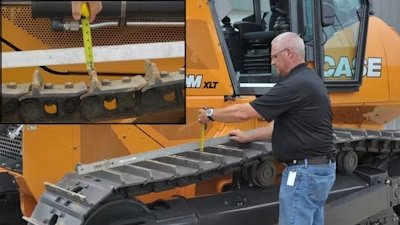
Bulldozer engine and power considerations
A strong and stable power system is the core to ensure the efficient operation of the bulldozer. Different project requirements need to pay attention to the following factors:
Engine and power matching
Power reserve: In actual operation, the machine often needs to work at peak torque. When selecting, at least 15%~20% of the power margin should be given to avoid premature wear of the engine due to long-term full-load operation.
Hydraulic and transmission system
Hydraulic assistance: Modern bulldozers mostly use electronically controlled hydraulic systems, which can automatically distribute oil flow according to the operating load, improve the operating response speed and comfort; torque converter transmission: Compared with mechanical gearboxes, hydraulic torque converters have less impact when starting and shifting, and are more suitable for working conditions with large load fluctuations.
Fuel efficiency and emissions
As green construction standards improve, it is necessary to choose engines that meet local emission regulations (such as Euro III/China III and above). Low fuel consumption design and efficient post-treatment system are preferred, allowing you to control operating costs while reducing pollution.
Intelligent and auxiliary configuration
Automatic control systems that integrate GPS, laser scanning or 3D modeling technology can correct the blade angle and height in real time to achieve accurate one-pass forming; remote monitoring and early warning functions help you detect potential faults in advance and minimize unexpected downtime.
How to choose the right bulldozer for your project
Choosing a bulldozer that truly suits the project needs requires a comprehensive consideration of the project characteristics and operating costs.
Evaluate project scale and working environment
Small greening or demolition projects: Compact bulldozers have obvious flexibility advantages;
Municipal construction with medium earthwork volume: Medium-sized crawler or wheeled models are both available, depending on the ground conditions;
Large-scale infrastructure or mining: High-power crawler machines are the first choice.
Pay attention to soil and terrain conditions
When encountering soft swampy strata, floating crawlers and swamp cutters are preferred; multi-tooth cutters and reinforced chassis are more reliable on rocks or forestry sites.
Full life cycle cost analysis
Combining the costs of purchase, fuel, daily maintenance, replacement of wearing parts and depreciation, a detailed cost model is prepared. For long-term projects, the cost comparison between leasing and purchase can be considered, taking into account both cash flow and tax incentives.
After-sales service and operation support
Preferably select brand suppliers with regional service networks and sign maintenance agreements. Training operators to master equipment characteristics and daily inspection points is the key to ensuring efficient operation.
Safety and compliance
Choose a cab with a complete rollover protection system (ROPS/FOPS), equipped with auxiliary equipment such as reversing images and driving recorders, and regularly organize safety operation training.
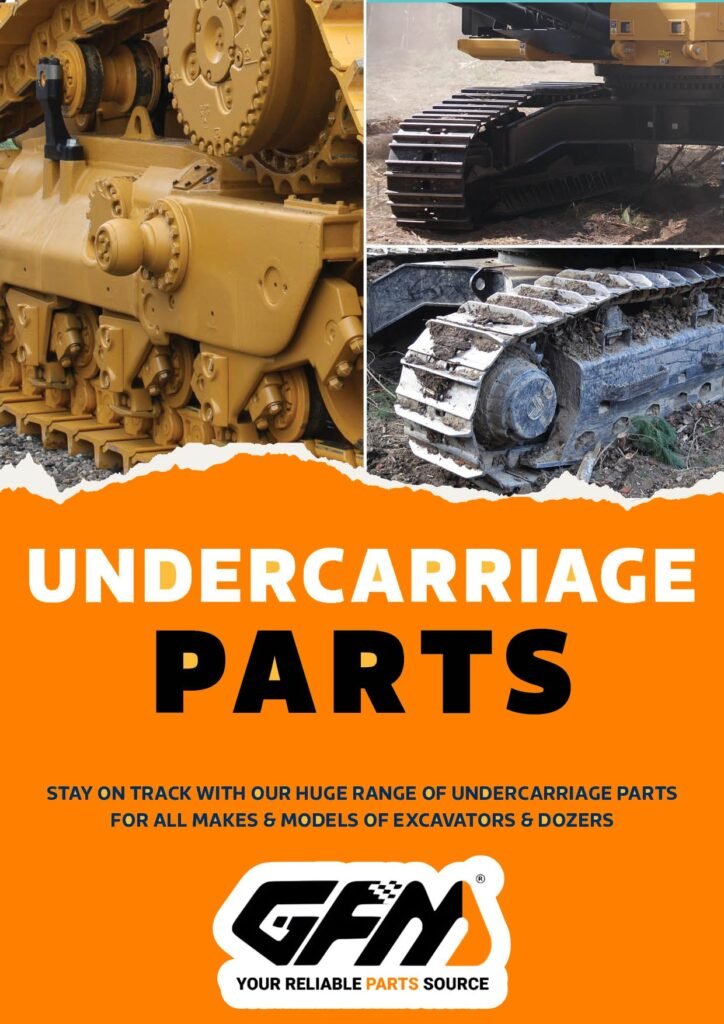
Common questions about bulldozers
Lease or buy bulldozers?
Advantages of leasing: suitable for short-term projects, low initial investment, flexible upgrades; Advantages of purchasing: for long-term projects or high-intensity use, purchasing can reduce cumulative costs and enjoy depreciation tax deductions.
Daily maintenance points
Check the hydraulic oil level, coolant and oil status daily.
Clean the radiator and air filter regularly to prevent blockage。
Replace the oil and filter according to the manufacturer’s recommended cycle to keep the system clean.
Service life and overhaul cycle
With good maintenance, the overall life of medium and large bulldozers can reach 15,000 hours, and small models are about 10,000 hours; the overhaul cycle is generally between 5,000 and 8,000 hours.
Return on investment of smart bulldozers
The intelligent system can improve operating efficiency by 15% to 25%, reduce rework rate and fuel consumption, and usually recover the additional investment in the middle of the project.
How to evaluate operating efficiency?
Taking into account the actual earthmoving volume, fuel consumption and downtime of the equipment, a simple unit earthwork cost index (yuan/cubic meter) is used to compare different models and operation methods to provide a reference for the next model selection.
| Hızlı ve ücretsiz bir teklif alın | E-posta: henry@gfmparts.com | Whatsapp: +86 17705953659 |
The above content presents you with an in-depth and detailed panoramic view of bulldozer types and applications. I hope it can help you find the tool that really suits your project needs among the complex equipment parameters. If you have more questions or need further case discussion, please feel free to communicate!
